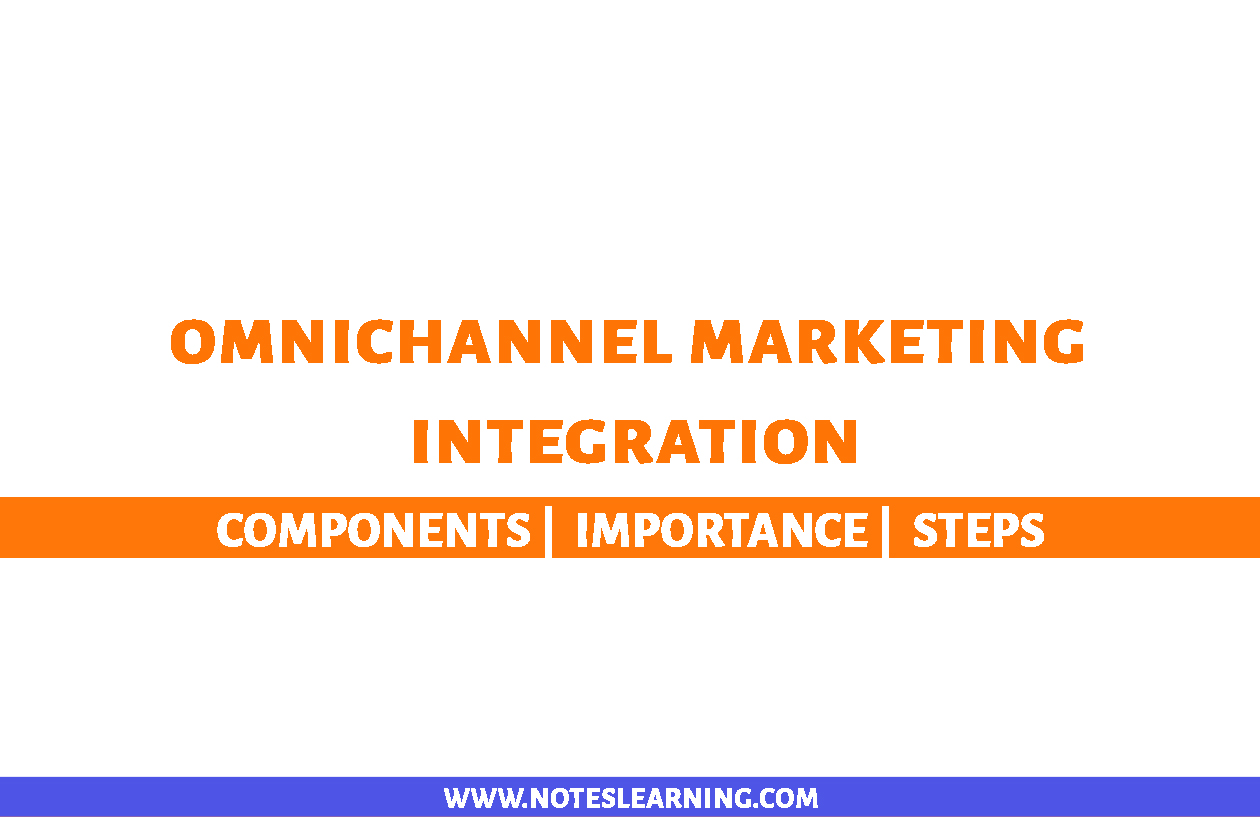Omnichannel Marketing Integration
Omnichannel marketing is the marketing strategy where a customer -centric approach provides a seamless experience to the customers. The main purpose of such marketing effort is to provide consistent brand experience to its customers across multiple marketing channels, online and offline.
| Online Channel | Offline Channel |
| Website Mobile App Social Media Email Marketing Online Advertising Chatbots and Live Chats E-commerce Marketplace | Catalogs Direct Mail Pop-up Shops Telephone Sales Outdoor Advertising Brick and Mortar Stores Trade Shows and Exhibitions Events and Experiential Marketing |
Such channels provide additional touchpoints for brands to engage with customers and create experience. Integration of all the channels deliver a seamless experience. There is a rapid digitalization in the world. Customers are using different channels to communicate with the brands. The purchasing decisions of the customers are influenced by both online and offline channels. Managing and delivering the consistent message across the channels in the purpose of omnichannel marketing integration. Channel integration provides customers flexibility and personalized and efficient customer journey.
Importance of Omnichannel Marketing Integration
Customer Experience
Omnichannel marketing strategy provides a consistent message across the platform and channels. Such marketing integration provides personalized interaction with the customers. Such strategies ensure a seamless and consistent experience to the customers. Unified and shared experience by the customers lead to greater customer satisfaction and lead to trust and loyalty. Omnichannel marketing happens to encourage repetitive purchase.
Improved Data Insights
Omnichannel marketing integration provides uniform information to the customers. Similarly, the same marketing approach allows businesses to gain a comprehensive understanding of customer behavior and preferences. The company can gather data from different channels about consumer behavior. Companies and businesses can utilize all these data from online and offline interaction and develop insights to serve customers and identify new opportunities for marketing efforts.
Operational Efficiency
Omnichannel marketing efforts align all the marketing efforts across the platform. Integration of channels and centralization of data reduces the duplication effort, minimizes the errors and effectively utilizes the resources between teams in an organization. Integration of system and workflows improve the marketing campaign, develops marketing conditions and helps in better decision making.
Components in Omnichannel Marketing Integration
Data
The main component of Omnichannel marketing is the data about the customers collected from various sources. All the data from websites, social media, physical outlets, and customer interaction needs to be collected and managed properly. These data provide information regarding purchasing behavior, preferences, and trends which are needed for marketing strategy.
Channels consistency
There is the usage of different channels. It is essential to maintain consistency across all channels in terms of branding, messaging, and customer interaction. Customers may use different channels and make the transition from one to another. Customers should get the same experience from each channel.
Customer journey
During the entire purchasing process, customers shift from one channel to another. In the customer journey, they might start with an online search, visit the store for purchase, and make payment through a mobile app. This entire process needs to be smooth and efficient.
Personalized targeting
Omnichannel allows the company to collect data about the customers from various channels. With the help of the collected data, personalized messaging and content can be created to target each individual.
Steps in Creating Omnichannel Marketing Integration
Step 1 Data Collection
The first step is data collection. Timely collection of accurate data from all the channels is essential for the strategy to work. The collected data allows the company to know about the target audience preference mode to communicate with and the features of the products that they want. The company needs to have the right tools to collect data from online and offline channels.
Step 2 Data Analysis
The second step is data analysis. There needs to be a team to convert the raw data into meaningful information. The meaningful information can allow the brand to create campaigns that can convert potential customers into actual customers.
Step 3 Mapping
The third step is mapping the customer journey. The company should create a customer journey map for each audience segment. This map analyzes the customer’s journey of discovering the brand and purchasing it. This helps the company outline the progress of the campaign and also consider the economic factors.
Step 4 Guidelines
The fourth step is creating the brand guidelines. These guidelines need to be communicated in each channel to promote brand awareness and recognition with the help of tailored messages
Step 5 Testing
The fifth step is testing and improving. The company needs to timely test and update this approach. This will help the marketing plan to optimize the expenditure, message, and creative needs.
Illustration
Starbucks is the best example of using Omnichannel Marketing Integration. They have developed a mobile which allows the customers to order in advance and avoid the morning line. Customers can pay with mobile phones and also receive reward points. With a certain amount of reward points, customers can get free coffee. Similarly, they also focus on the in-store experience. Starbucks has an installed digital board that showcases personalized recommendations based on customer history and preferences.


